Tribal tattoos, a form of art and identity that has adorned human skin for millennia, carry a profound cultural significance that transcends time and geography. From the intricate patterns of Polynesian Tatau to the bold symbols of Maori Ta Moko, each tribal tattoo tells a story of heritage, belonging, and personal journey. Tribal tattoos are not just a form of body art; they are a legacy of cultural expression, deeply rooted in the history of civilizations across the globe. This guide delves into the intricate world of tribal tattoos, exploring their origins, meanings, and modern interpretations.
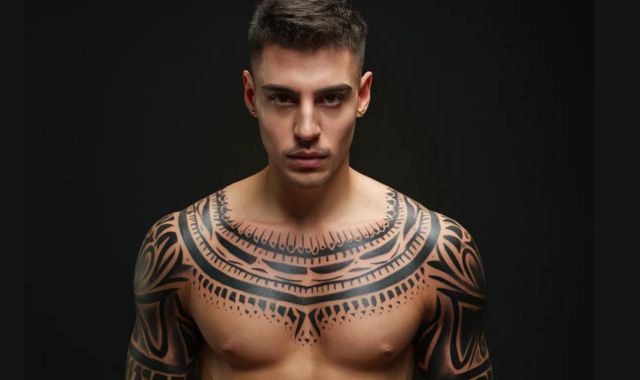
Historical Overview of Tribal Tattoos
The history of tribal tattoos is as rich and varied as the designs themselves. These tattoos have served as rites of passage, marks of status, and symbols of community across various cultures. The ancient Egyptians, for instance, adorned their bodies with tattoos that signified religious beliefs and social status. In Polynesia, the tradition of tattooing dates back over two thousand years, with the word ‘tattoo’ itself stemming from the Tahitian word ‘tatu’, meaning to mark.
Cultural Significance
Tribal tattoos were more than mere decorations; they were integral to the cultural fabric of the societies that bore them. They represented strength, bravery, and spiritual guidance. In many indigenous cultures, receiving a tattoo was accompanied by rituals and ceremonies, emphasizing its importance within the community.
Diverse Styles and Symbolic Meanings
The styles and meanings of tribal tattoos vary significantly from one culture to another. Polynesian tattoos, for example, are known for their complex geometric patterns and often symbolize courage and social status. The Maori’s Ta Moko, on the other hand, is highly personalized, reflecting the individual’s identity, family lineage, and achievements.
A World of Inspiration:
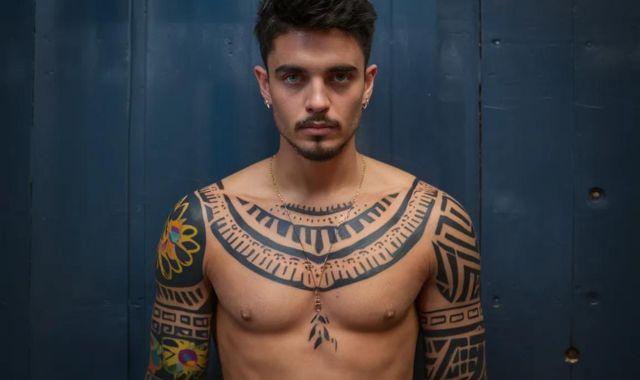
Polynesian (Maori, Samoan)
Polynesian tattoos, known for their intricate patterns and deep cultural roots, often tell stories of identity, ancestry, and social status. The Maori ta moko is a sacred form of body art with curvilinear shapes and spirals, representing genealogy and personal history. Samoan tattoos, or tatau, are a mark of cultural identity and a rite of passage, featuring bold, abstract patterns.
Celtic
Celtic tribal tattoos are renowned for their complex knotwork, spirals, and animal motifs. These designs often symbolize the eternal cycle of life and the interconnectedness of all things. Celtic crosses and knots represent unity and an endless path.
North American (Indigenous Tribes)
Indigenous tribes of North America used tattoos as symbols of spiritual protection, achievements, and tribal identity. Tattoos might feature animal totems, celestial bodies, and other natural elements significant to the tribe’s culture.
African (Borneo, Dayak)
The Dayak people of Borneo have a rich tradition of tattooing, known as Tutang, believed to guide the soul in the afterlife. These tattoos often signify life milestones, tribal status, and spiritual devotion.
Southeast Asian (Thailand, Philippines)
In Thailand, Sak Yant tattoos are believed to provide protection and blessings, featuring sacred geometrical designs and Pali phrases. Filipino tribal tattoos, or batek, reflect bravery, tribal lineage, and spiritual guidance.
Understanding the Symbols:
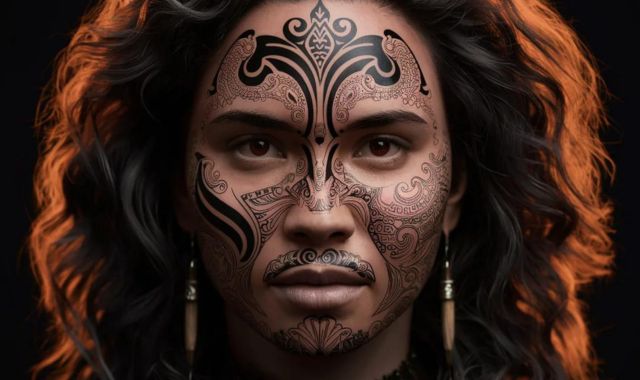
Animals (Strength, Wisdom, Protection)
Animals are prevalent in tribal tattoos, each symbolizing various attributes. Eagles and wolves often represent strength and courage, while turtles may symbolize wisdom and longevity.
Spirals (Life Cycles, Eternity)
Spirals are a common element, representing life cycles, growth, and eternity. They are a visual metaphor for the journey of life and the continuous evolution of the spirit.
Geometric Shapes (Balance, Harmony)
Geometric shapes in tribal tattoos, such as circles, triangles, and squares, are used to convey balance, harmony, and stability. They can also represent concepts like eternity and interconnectedness.
The Neo-Tribal Movement:
Blending Traditional Elements with Modern Techniques
The Neo-Tribal Movement is a modern interpretation of traditional tribal tattoos, incorporating bold outlines and vibrant colors. It draws inspiration from various art movements and cultures, creating a dynamic fusion that respects the past while embracing the present.
Bold Lines and Graphic Design Influences
Neo-Tribal tattoos are characterized by their striking, bold lines and often incorporate elements of graphic design. This style emphasizes the visual impact of traditional tribal patterns, giving them a fresh, modern edge.
Tribal Fusion:
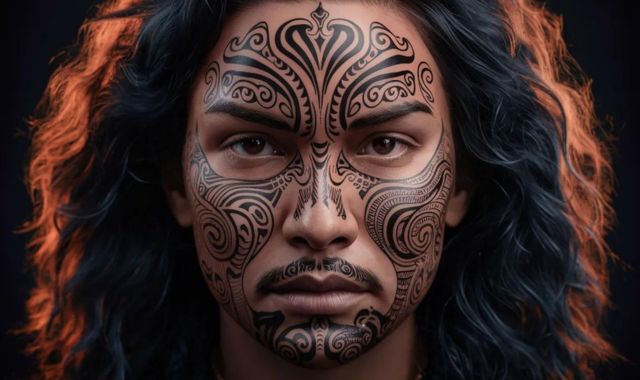
Combining Tribal Elements with Other Styles (Blackwork, Watercolor)
Tribal Fusion is an innovative approach that combines traditional tribal elements with other tattoo styles like blackwork and watercolor. This blend allows for a more personalized expression, as it merges the distinctiveness of tribal art with the fluidity and color variations of other styles.
Creating Unique and Personalized Designs
Tribal Fusion tattoos are about creating unique and personalized designs that reflect the individual’s identity and aesthetic preferences. By integrating different styles, artists can craft bespoke tattoos that honor tribal heritage while also showcasing the wearer’s personality.
Exploring Meanings
Researching Specific Symbols and Their Cultural Significance
Before selecting a tribal tattoo, it’s crucial to research the meanings behind specific symbols. Each tribal design has its own history and significance, often rooted in the culture from which it originates. Understanding these meanings ensures that your tattoo respects the traditions and carries a message that is true to its heritage.
Finding a Design that Resonates with Your Personal Values
A tribal tattoo should be a reflection of your personal values and beliefs. Explore various symbols and their meanings to find a design that resonates with you on a deep level. Whether it’s strength, wisdom, or protection, your chosen design should embody the qualities that are most important to you.
Placement with Purpose:

Traditional Placement Areas for Different Tribes
Tribal tattoos were traditionally placed on specific body parts, each with its own meaning and purpose. For example, Polynesian shoulder tattoos may signify bravery, while Maori facial tattoos could represent lineage and status. Consider these traditional placements as a way to honor the cultural roots of the tattoo style you choose.
Considering Placement Based on Body Shape and Visibility
The placement of your tribal tattoo should also take into account your body shape and the visibility of the tattoo. Popular areas like the upper arm or shoulder provide a large canvas for intricate designs and are easily visible, making them great choices for showcasing your tattoo. However, if you prefer a more discreet location, consider areas like the wrist or ankle for smaller, more personal designs.
Remember, a tribal tattoo is not just a piece of art; it’s a symbol of identity and heritage. Take your time to choose a design and placement that truly reflects who you are and the story you want to tell.
Design Considerations
The artistry of tribal tattoos lies in their distinctive linework and shading, as well as the choice of color palettes. Here’s a detailed look at these design considerations:
Linework and Shading:
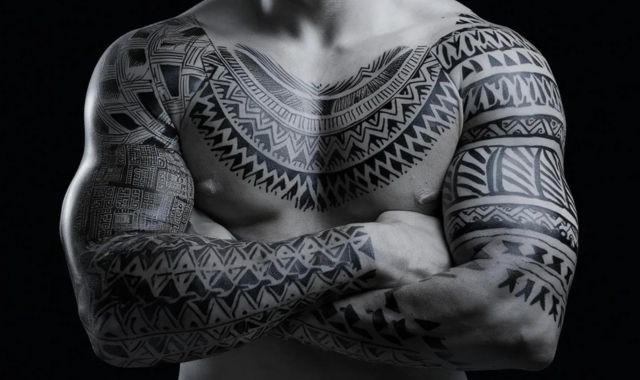
Bold Outlines and Negative Space
Tribal tattoos are known for their bold outlines which define the shapes and patterns of the design. The use of negative space is equally important, as it highlights the tattoo’s motifs and provides contrast.
Dotwork and Hatching Techniques
Dotwork involves creating images or shading with dots, which can give a textured appearance. Hatching, using lines to produce tonal or shading effects, is another technique that adds depth and dimension to tribal tattoos.
Color Palettes:
Traditional Black and Grey
The traditional color palette for tribal tattoos is black and grey, which helps in emphasizing the design’s contrast and intricate details. This classic approach remains popular for its timeless aesthetic and strong visual impact.
Exploring Modern Color Accents
While traditional tribal tattoos are typically black and grey, modern variations sometimes incorporate color accents. These can range from subtle hues to bold, vibrant colors, adding a contemporary twist to the classic designs.
When considering a tribal tattoo, it’s essential to think about how these elements will work together to create a harmonious and meaningful design that resonates with you.
Finding the Perfect Tribal Tattoo Artist
Tribal tattoos are a profound way to express personal identity and connect with cultural heritage. Here’s a guide to help you find the right artist and ensure your tattoo experience is respectful and authentic.

Experience with Tribal Styles
Look for an artist who specializes in tribal tattoos and has a portfolio showcasing their expertise in various tribal styles. Their work should reflect a deep understanding of the traditional patterns and symbols.
Strong Linework and Shading Skills
Tribal tattoos require precision in linework and shading. Review the artist’s previous work to ensure they can deliver crisp lines and even shading, which are crucial for the bold look of tribal designs.
Consultation Tips
Discussing Your Design Ideas and Inspiration
During the consultation, communicate your design ideas clearly. Bring references and be open to the artist’s suggestions to create a tattoo that is both personally meaningful and culturally respectful.
Understanding Aftercare Instructions
Ensure you understand the aftercare instructions provided by the artist. Proper aftercare is essential for the healing and longevity of your tattoo.
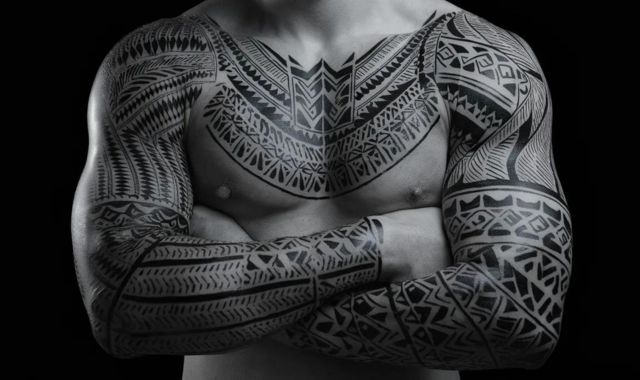
Living with Your Tribal Tattoo
Proper Aftercare for Optimal Healing
Follow the aftercare regimen diligently to promote optimal healing. This includes keeping the tattoo clean, moisturized, and protected from the sun.
The Journey of Fading: Maintaining the Integrity of Your Tattoo
Over time, all tattoos fade. To maintain the integrity of your tribal tattoo, consider touch-ups and continue to protect it from sun exposure.
Cultural Sensitivity and Appropriation: Respecting Tribal Traditions
Be mindful of the cultural significance of tribal designs. Choose symbols that you have the right to wear and avoid appropriating sacred elements from cultures not your own.
Conclusion of Tribal Tattoos Designs
Tribal tattoos have an enduring appeal, offering a unique way to express personal identity. It’s important to approach them with cultural understanding and make responsible choices that honor the traditions they come from. By doing so, you ensure that your tattoo not only looks beautiful but also pays homage to the rich cultural tapestry it represents.
Tribal tattoos are a beautiful testament to the enduring human desire to express oneself through art. They bridge the past and present, connecting us to the ancient traditions that continue to inspire and shape our world.
 Life Styles Up All About Fashion Related Hub
Life Styles Up All About Fashion Related Hub